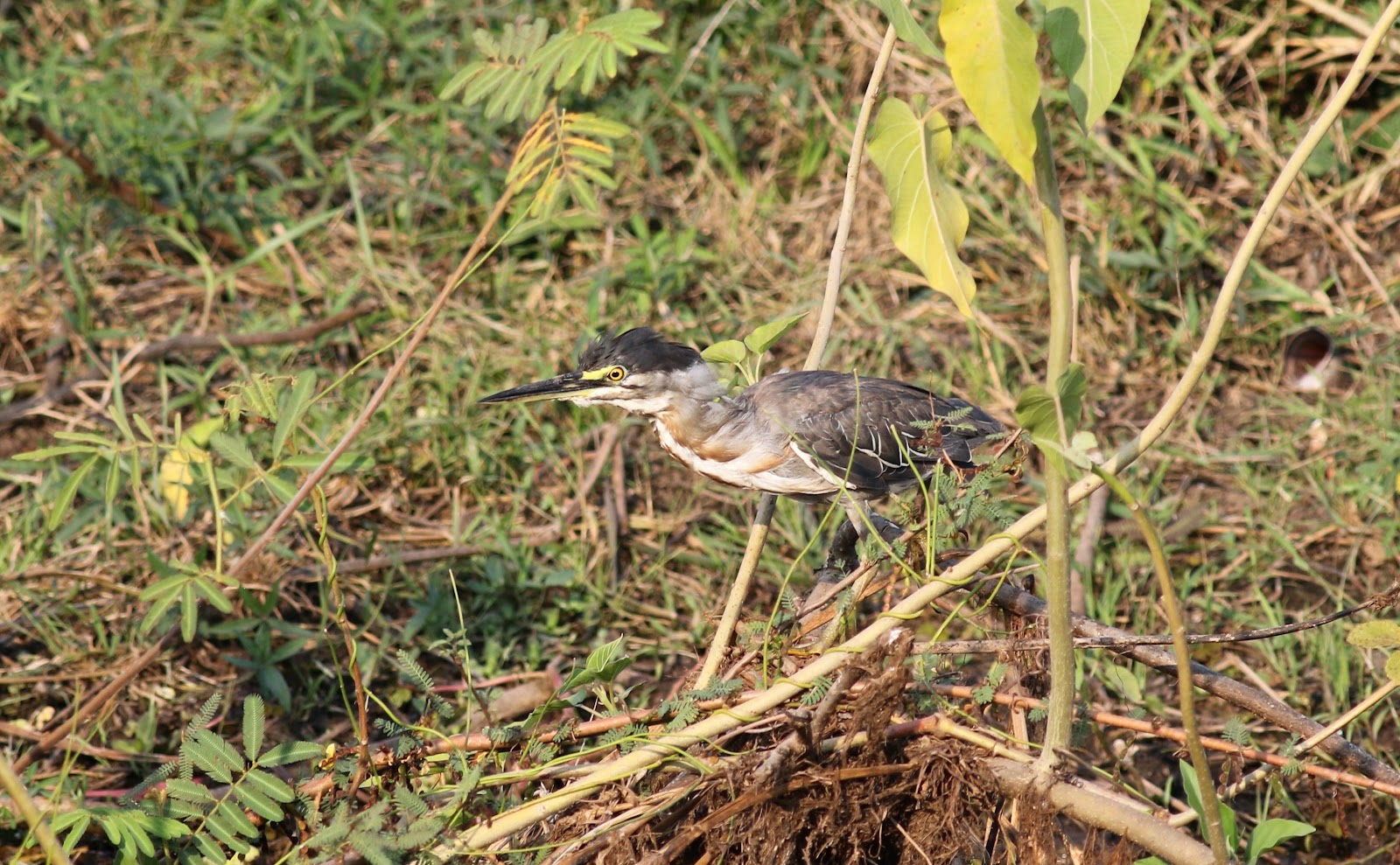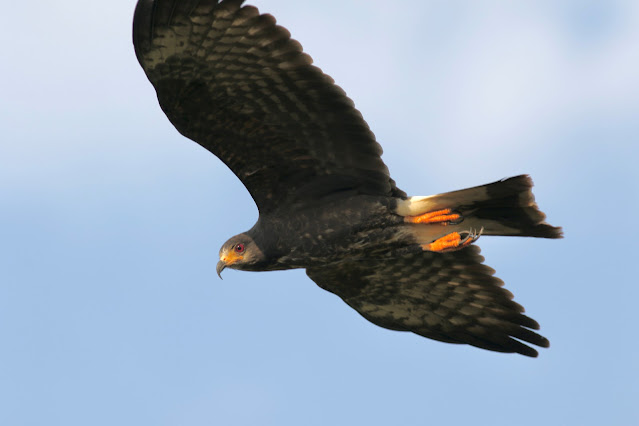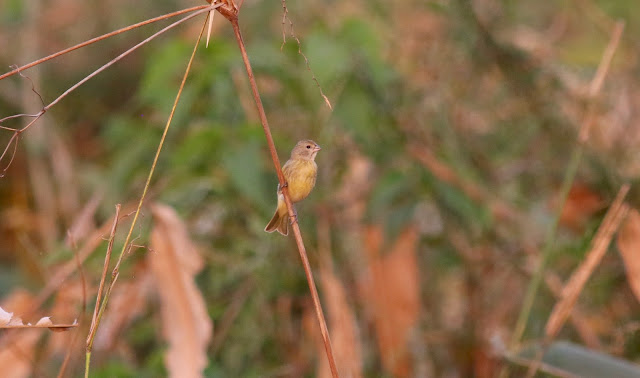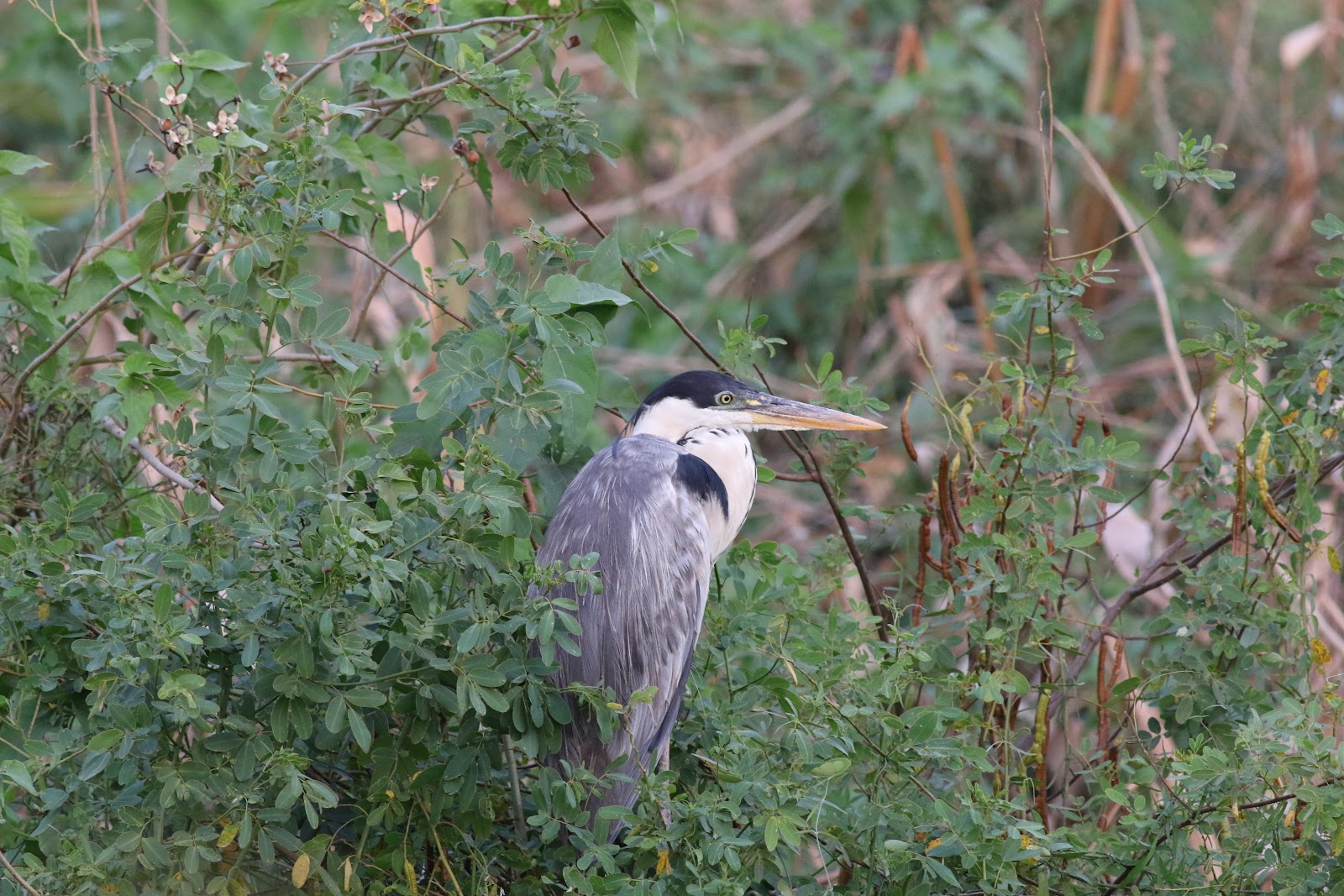The drive from Chapada to our next stop at Aymara Lodge in the heart of the Pantanal was uneventful if not boring. We finally got to do some sporadic birding once we got onto the famous Transpantaneira which is the dirt road that goes into the heart of the Pantanal. Here is the Wiki entry for it:
"The Transpantaneira, also known as MT-060, is a road that crosses the pantanal, in the state of Mato Grosso in Brazil. The road is a link between the city of Poconé and the town of Porto Jofre. It's 147 km long and crosses no less than 122 wooden bridges. The road provides opportunity for wild life watching, especially in dry season."
In the above pic you can see the Transpantaneira starts where the road turns orange after the city of Pocone.
Rusty-margined Flycatcher
Rufescent Tiger-Heron juvenile.
Unicolored Blackbird female. The males are truly unicolored or no-colored if you consider black the lack of color.
White-winged Swallow
Gray-breasted Martin
Pantanal Caiman
White-headed Marsh Tyrant
Unicolored Blackbird male.
Chestnut-bellied Seed Finch - there were so many birds popping up that I can't be sure we all saw the same birds. This species wasn't on the list that Sherry shared so I have to assume I was the only one that saw it even though I was standing next to everyone else. Or maybe they just missed it on the list.
Greater Thornbird - a large version of a spinetail with a yellow eye.
Swainson's Flycatcher - this was called out by the guide but beware, Myiarchus Flycatchers are notoriously difficult to ID in this part of the world. Perhaps the guide heard the whistle call. Certainly it had cold coloring and lack of rufous in the tail and wings and the bill seemed dark but with some lighter areas in the bill base.
Grassland Yellow-Finch - another hard to ID bird considering the very similar female Saffron Finch.
Short-crested Flycatcher - very similar to above Swainson's but a lack of lighter bill base.
Cocoi Heron - in South America, they don't have Great Blues but they have Cocois.
Blue-gray Saltator
When we arrived at Aymara Lodge, it was already dark and no one wanted to go night birding. I was somewhat tired so I capitulated and after a delicious meal I went to bed. I do regret it now because we ended up never making a concerted effort for night birds not to mention Tapirs which are more active at night. If you do go to Aymara, insist on trying for some of the nocturnal species. The Rockjumper tour that went after us got some great pics of some owls and Tapirs at night.

































No comments:
Post a Comment